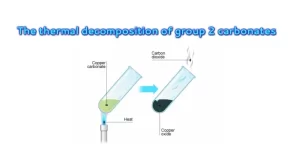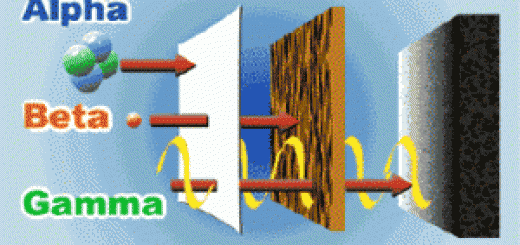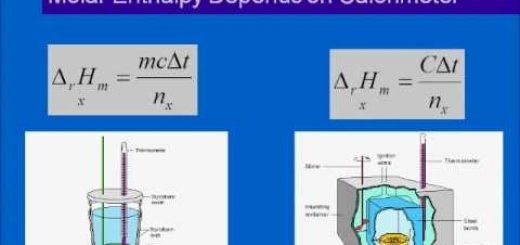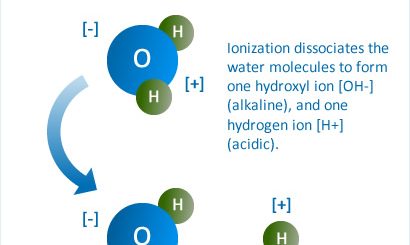Chemical reactions, Types of thermal decomposition reactions and Air bags importance
The chemical reaction is the breaking up of bonds in the reactants molecules and formation of new bonds in the products (resultants) molecules from the reaction. Chemical reactions play an important role in our daily life as in the following examples:
Chemical reactions importance
- Burning of car fuel (gasoline) in the car engine generates power, which makes the car move.
- Plants make their food through the photosynthesis process, which depends mainly on the reaction of carbon dioxide with water.
- Medicines, fertilizers, and artificial fibers are examples of products of some chemical reactions.
Types of chemical reactions
Thermal decomposition reactions:
- Decomposition of some metal oxides.
- Decomposition of some metal hydroxides
- Decomposition of most metal carbonates.
- Decomposition of most metal sulphates
- Decomposition of some metal nitrates.
Substitution reactions
Simple substitution reactions:
- A metal substitutes the hydrogen of water.
- A metal substitutes the hydrogen of diluted acid.
- A metal substitutes another metal in its salt solution.
Double substitution reactions:
Oxidation and reduction reactions:
- According to the traditional concept.
- According to the modern (electronic) concept.
Thermal decomposition reactions
Thermal decomposition reactions are chemical reactions that involve the breaking up of the compounds with the effect of heat into their primary elements or simpler compounds than the original ones.
AB ⇒ A + B
Types of thermal decomposition reactions
- Decomposition of some metal oxides.
- Decomposition of some metal hydroxides.
- Decomposition of most metal carbonates.
- Decomposition of most metal sulphates.
- Decomposition of some metal nitrates.
The products of thermal decomposition reactions differ according to the difference of the type of the compound used in the reaction as follows:
Thermal decomposition of some metal oxides
Some metal oxides decompose by heat into metal and oxygen gas evolves.
Metal oxide ⇒ Metal + Oxygen gas
Thermal decomposition of red mercuric oxide (HgO)
Procedures: Put a little amount of red mercuric oxide in a clean test tube, heat the content of the test tube by using a flame, and approach a burning match close to the opening of the tube.
Observations:
- A silvery precipitate is formed at the bottom of the tube.
- The burning match glows more.
Conclusion: Red mercuric oxide decomposes by heat into mercury (silvery precipitate) at the bottom of the tube, and oxygen gas evolves (which increases the glow of the burning match).
2HgO ⇒ 2Hg + O2 ↑
The formation of silvery colour by heating red mercuric oxide due to the decomposition of red mercuric oxide by heat into mercury (silvery precipitate) and oxygen gas evolves.
Thermal decomposition of some metal hydroxides
Some metal hydroxides decompose by heat into metal oxide and water vapour evolves.
Metal hydroxide ⇒ Metal oxide + Water vapour
Thermal decomposition of blue copper hydroxide (Cu(OH)₂)
Procedures: Put a little amount of blue copper hydroxide in a clean test tube, and heat the content of the test tube by using a flame.
Observation: A black substance is formed.
Conclusion: Blue copper hydroxide decomposes by heat into copper oxide (black colour) and water vapour evolves.
Cu(OH)₂ ⇒ CuO + H2O ↑
The formation of black substance by heating blue copper hydroxide due to the decomposition of blue copper hydroxide by heat into copper oxide (black) and water.
Thermal decomposition of most metal carbonates
Most metal carbonates decompose by heat into metal oxide and carbon dioxide gas evolves.
Metal carbonate ⇒ Metal oxide + Carbon dioxide gas
Thermal decomposition of green copper carbonate (CuCO3)
Procedures: Put a little amount of green copper carbonate in a clean test tube, Heat the content of the test tube by using a flame, and pass the produced gas into clear limewater for a short time.
Observations:
- A black substance is formed.
- The clear limewater becomes turbid.
Conclusion: Green carbonate decomposes by heat into copper oxide (black colour) and carbon dioxide gas evolves (which turbids clear limewater).
CuCO3 → CuO + CO2 ↑
The formation of black substance by heating green copper carbonate due to the decomposition of green copper carbonate by heat into copper oxide (black) and carbon dioxide gas evolves.
Thermal decomposition of most metal sulphates
Most metal sulphates decompose by heat into metal oxide and sulphur trioxide gas evolves.
Metal sulphate ⇒ Metal oxide + Sulphur trioxide gas
Thermal decomposition of blue copper sulphate (CuSO4)
Procedures: Put a little amount of blue copper sulphate in a clean test tube, and heat the content of the test tube by using a flame.
Observation: A black substance is formed.
Conclusion: Blue copper sulphate decomposes by heat into copper oxide (black colour) and sulphur trioxide gas evolves.
CuSO4 ⇒ CuO + SO3 ↑
The blue colour of copper sulphate turns black by heating due to the decomposition of blue copper sulphate by heat into copper oxide (black) and sulphur trioxide gas evolves.
Thermal decomposition of some metal nitrates
Some metal nitrates decompose by heat into metal nitrite and oxygen gas evolves.
Metal nitrate ⇒ Metal nitrite + Oxygen gas
Thermal decomposition of white sodium nitrate (NaNO3)
Procedures: Put a little amount of white sodium nitrate in a clean test tube, heat the content of the test tube by using a flame, and approach a burning match close to the opening of the tube.
Observations:
- A yellowish-white substance is formed.
- The burning match glows more.
Conclusion: White sodium nitrate decomposes by heat into sodium nitrite (yellowish-white colour) and oxygen gas evolves (which increases the glow of the burning match).
2NaNO3 ⇒ 2NaNO2 + O2 ↑
A yellowish-white colour is formed on heating white sodium nitrate due to the decomposition of white sodium nitrate by heat into sodium nitrite (yellowish white) and oxygen gas evolves.
Airbags
Air bag: It is an inflatable bag folded inside the steering wheel in modern cars.
Importance: They are considered one of the most important safety means in cars at emergencies.
The idea of the operation
On the occurrence of a car accident (crash) or a sudden drop in the speed of the car, an electric spark is generated works on the decomposition and explosion of the substance of sodium azid (which is present inside the airbag) forming sodium and nitrogen gas evolves.
2NaN3 ⇒ 2Na + 3N2 ↑
The bag gets inflated by nitrogen gas at an extreme speed (within only 40 millisecond), then it gets vacuumed rapidly to ensure clear vision and proper movement for the driver.
Speed of chemical reactions, Types of catalytic reactions & Catalytic converter
Substitution reactions, Chemical activity series, types of simple & double substitution reactions
Types, importance, negative effects of chemical reactions, Sulphur & Carbon oxides harms




